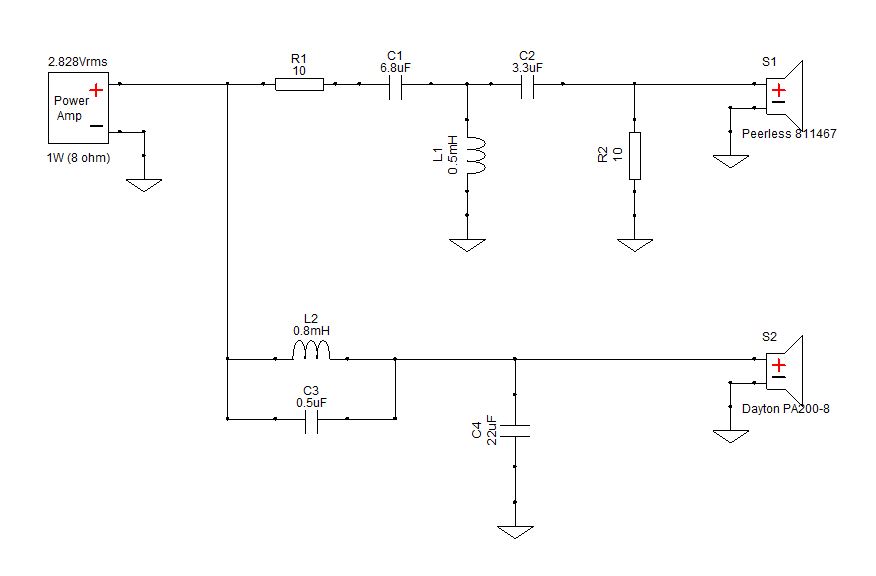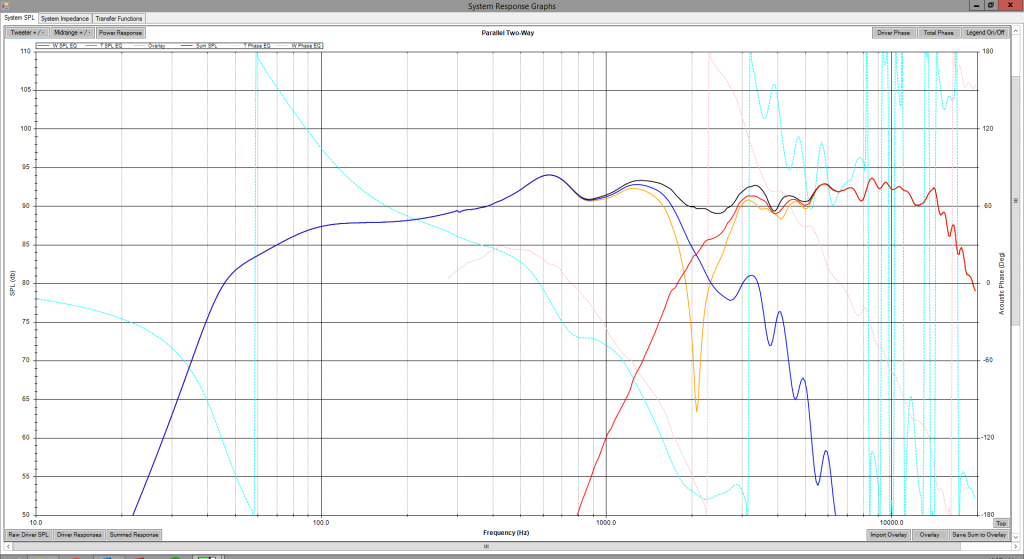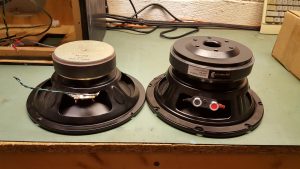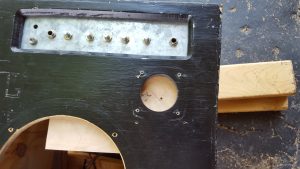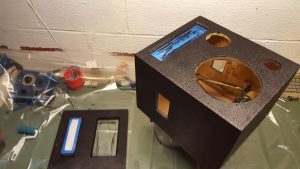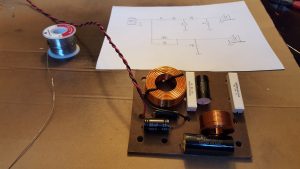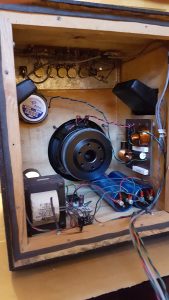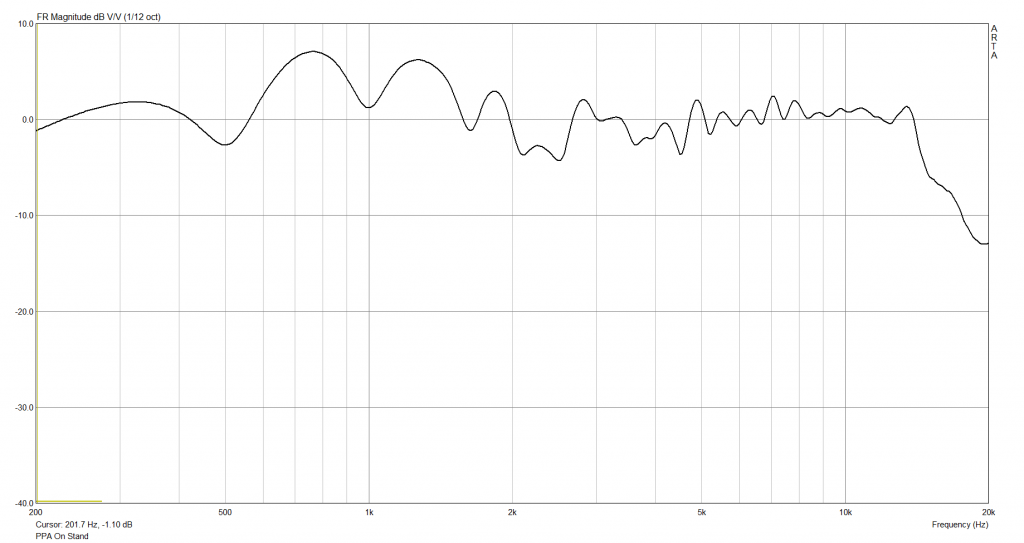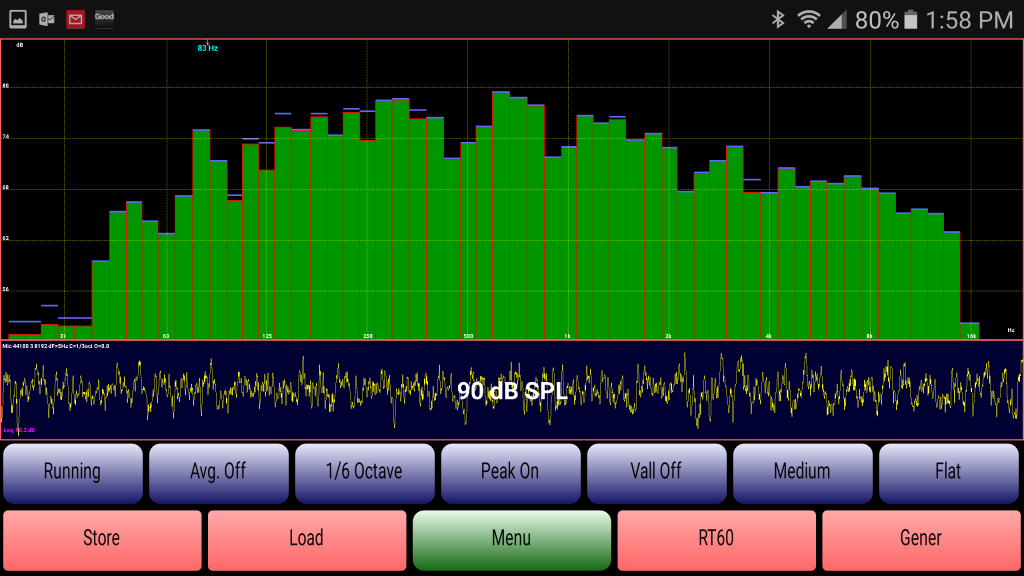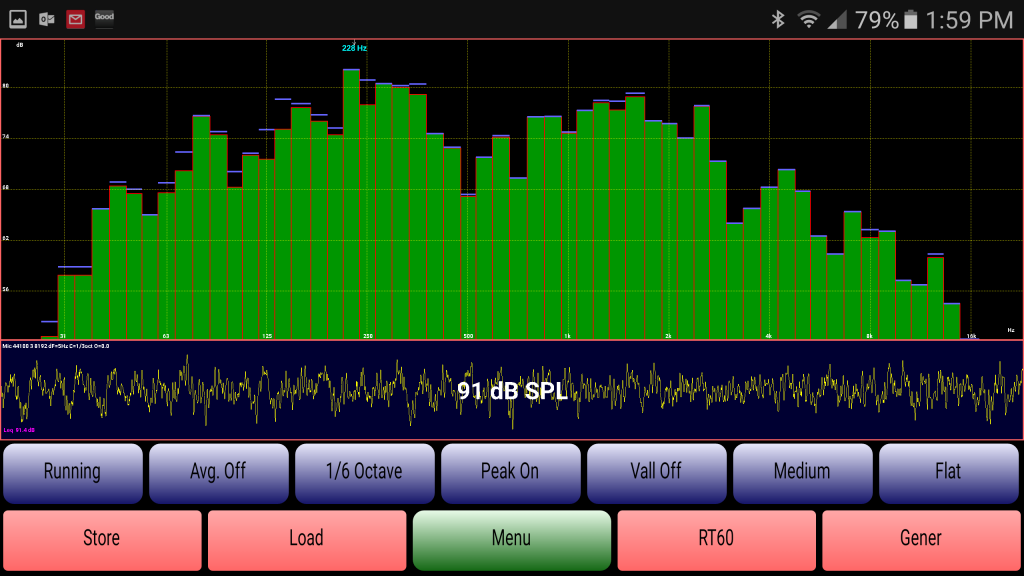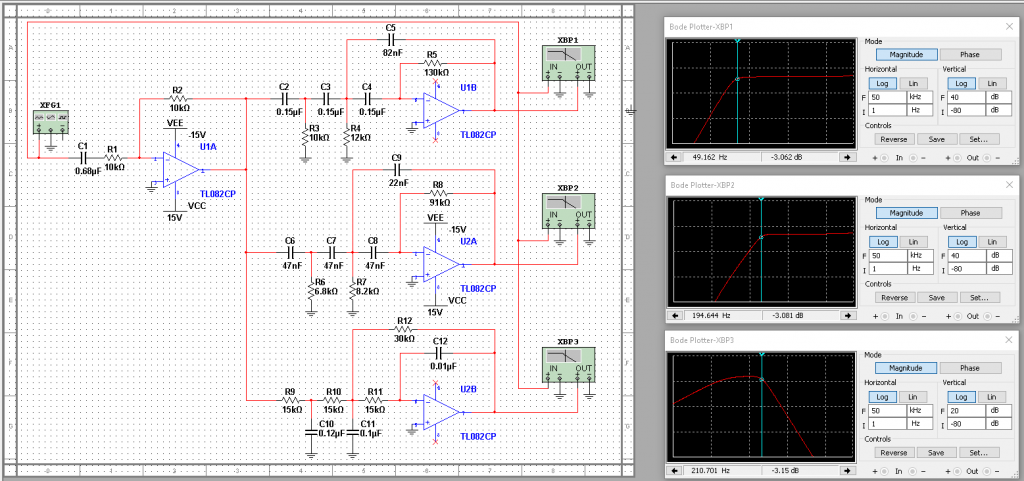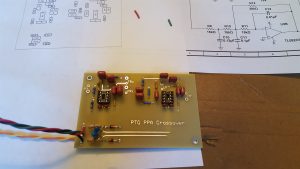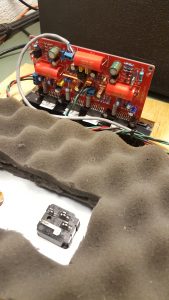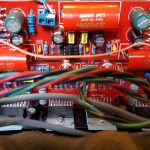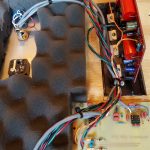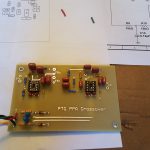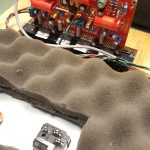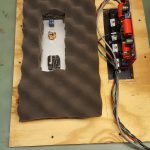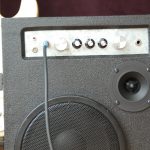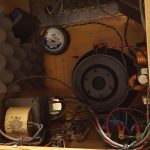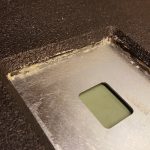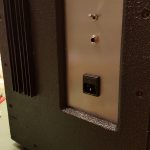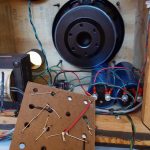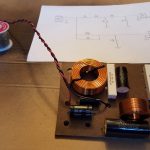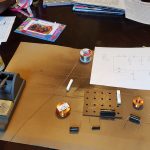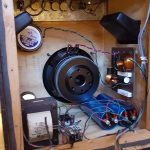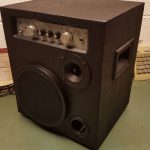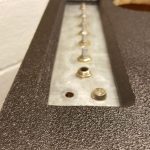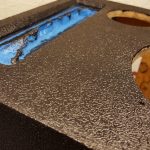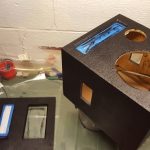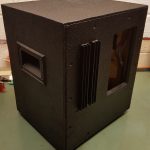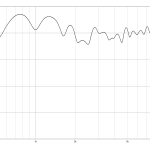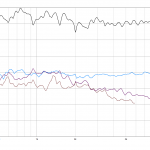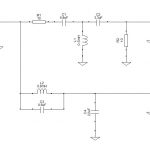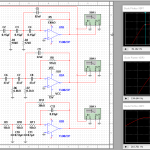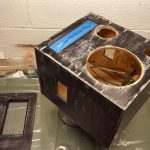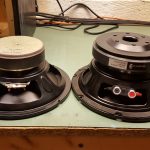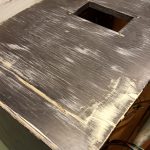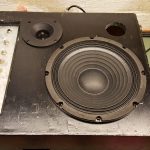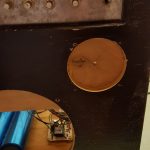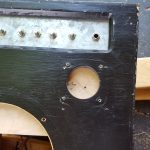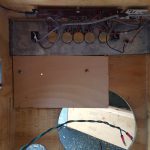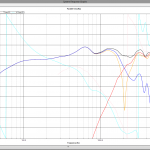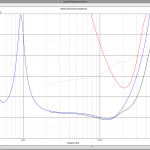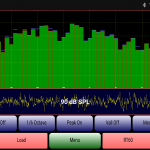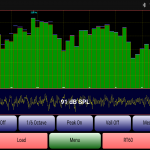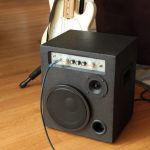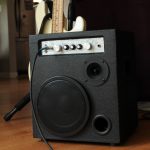DIY Bass Amp PPA100
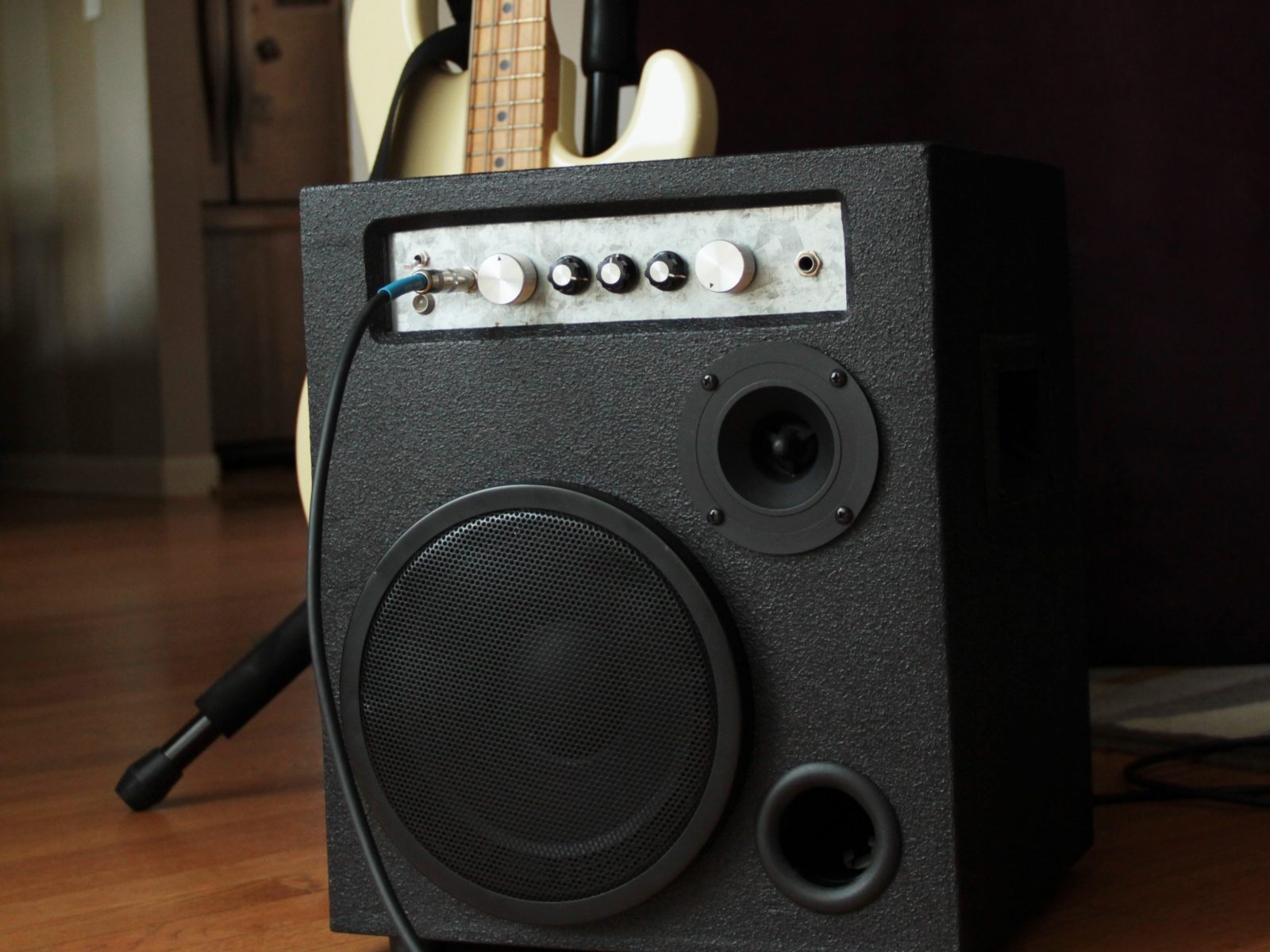
A Portable Practice Amplifier for bass guitar, designed to have a far more accurate frequency response than the typical commercial offerings. This design goal makes it suitable for a mono music blaster, a keyboard amplifier, or whatever needs loud, clean and portable sound near an AC power outlet.
The electronics were designed long ago, and will not be documented here in detail, however they are based on National Semiconductor applications manuals and include the appropriate gain blocks and a 3 way shelving tone control. This old project was updated with a properly designed speaker, a new custom active filter setup, and a PBTL amplifier board to make the most out of the existing power supply.
Speaker Design
The speaker is simple enough to re-create, and would be a decent compact PA / keyboard / bass guitar speaker in its own right.
The design is a simple trapezoid, 15” wide by 13” tall and 11” deep constructed from ½” ply originally chosen to save on weight and be durable.
The Dayton PA200-8 was chosen for the woofer, and aligns vented with a 2” x 2.5” vent tuning the box to about 47Hz and reaching 49Hz at the -3B roll off point. The pro woofer will exceed Xmax pretty easily in the 80Hz range, however the Xmech is much larger so the damage potential for the woofer is minimal and the only risk is elevating distortion at high power. For this application, that’s an easy trade off.
The Peerless 811647 horn loaded dome tweeter was chosen based on cost, response, and very high efficiency. The manufacture specification sheet was used to trace the response and impedance profile for crossover modeling.
The crossover uses a 2nd order electrical layout on the woofer with a cap as a breakup notch on the coil, paired to a 3rd order electrical filter for the tweeter including significant padding to drop down the high sensitivity of the tweeter to match the woofer.
The modeled crossover output puts the system just over 90dB / watt efficient and within +-3dB from 300 to 15kHz with the low end a bit lower reaching about -6dB at 50Hz. The box is intended for use on the floor, so the boundary will compensate the low end.
Build
The old cabinet was originally designed super cheap with a generic MCM poly cone woofer and a Radio Shack piezo tweeter and no crossover at all.
The finish was sanded down a bit and the tweeter hole was enlarged using a chunk of wood behind the hole to fit the Peerless tweeter.
The finish was originally some primer and epoxy type appliance paint, but had shown a good 20 years of age, so a good amount of sanding and classic black Duratex updated the look.
The crossover was assembled on peg board straight from the simulated values, since no measurement gear was available to assist in validating the design.
Parts are zip tied to the board and point to point soldered. The crossover board was mounted in the cabinet on the side, squeezed in along the other electronics.
Some additional egg create foam was added to help damp the inside a bit, and once the electronics were tweaked and working a completed measurement was made using my trusty iMM6 directly into my Surface Pro 3 with ARTA.
Measurements
The gated response on a stand from approximately 1M was very similar to the simulation, save a bit too much padding on the tweeter. I’m not positive if the 300Hz and 1.3kHz lumps are not room or measurement related.
Given the application intention as a bass guitar amplifier, I did a simple pink noise RTA comparison against an Eden Nemesis cabinet that has 2 10” woofers in a vented cabinet and a bullet style tweeter. Both amps were set to flat with no active tone control and measured while sitting on the floor with the mic about 6’ away and 4’ off the ground. Way off axis, but representative of how they would be used with a bass guitar.
The PPA has a smooth curve with pretty even distribution across the mid and treble and decent low end content that drops off below 50Hz. Of course, the electronics include an 18dB/octave filter below 40Hz so the drop off is completely intended.
The commercial Eden cabinet by contrast has a whole lot more variation in response, but a bit more output in the bottom, hardly a surprise considering the dual 10” woofers against a single 8”.
Listening Impressions
This little cabinet is superb with the bass guitar, the tone is clean and pure and all overtones are reproduced exactly as they come out of the jack. I couldn’t be happier.
I also made a cable adapter to take the output from a phone and sum to mono for use as a portable music blaster. In this application the amp is capable of getting party time loud while sounding well balanced. Certainly not up to critical listening against a good set of hi-fi speakers, but plenty good for a portable party machine, particularly with the tone controls to adjust up the bass output.
Potential Improvements
If I were to build new, I would use ¾” wood for the cabinet, additional damping and bracing, and adjust the tweeter padding to improve the final frequency response a bit.
Electronics
The existing pre-amplifier board was designed many years ago and left as is. The amplifier and a custom filter was added to improve the system.
I chose a Yuan-Jing Quad TDA7293 BTL Mono Power Amplifier Board with NE5532 Preamp 350W to pair up with the existing power supply, which outputs +-25V and 4A of current. This made the amp capable of outputting 100W RMS into the 8 ohm speaker and is over spec enough to be robust and hard to kill.
The active filter board was designed to provide the 40Hz high pass filter to the amp at 18dB / octave, protecting the woofer below the port tuning frequency and allowing higher output. Additionally, a 200Hz 2 way filter was added with a switch to change an output on the back between full range and <200Hz for expanding the little amp into a bi-amped gig capable monster.
The crossover board was drawn up and prototyped by ExpressPCB using their software.
The amp and crossover boards were built onto the back panel using the heat sink I had in there for my own failed amplifier design years ago.

